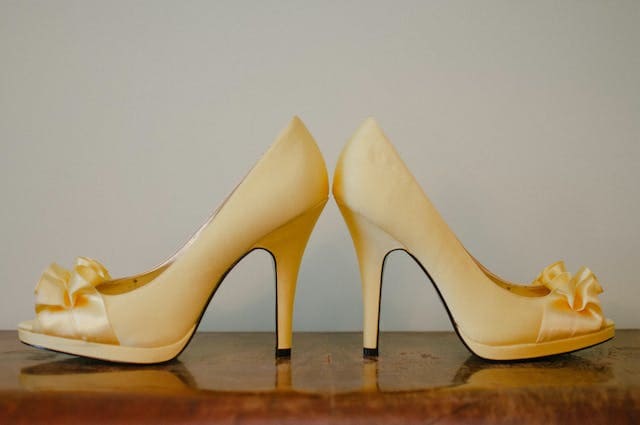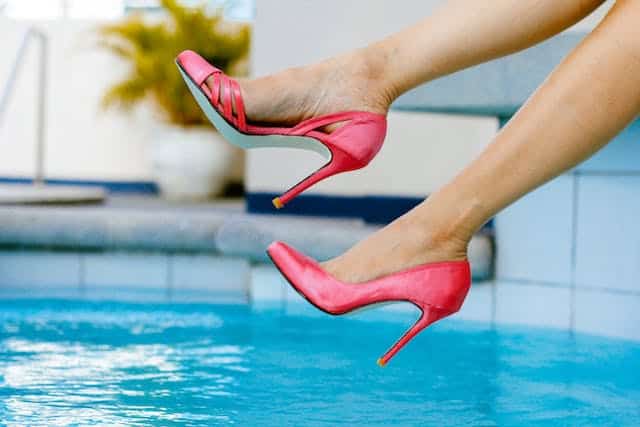Are High Heels Bad For Your Feet?
Walking in high heels is not for everyone. Some women carry themselves with ease on their 10-centimeter heels, while others make tremendous efforts to stay at this height, but still do not give up for the sake of beauty. High heels make women feel more slender and sexier, and give their clothes a touch of elegance. But the abuse of this type of footwear is very bad for health. So, are High Heels bad for your feet? Wearing high heels causes pains in the feet and ankles if you walk with them for a long time, and exposes those who use them to twists and falls that can lead to injuries that go beyond a sprain. Let us explore in this article, some of the common damages high heels can do to your feet and health.
Orthopedists aren’t big fans of high heels, but let’s see if there are any benefits to high heels.

Benefits of wearing high heels
- They give height
The first bonus is obvious. High heels make the legs look longer, the figure slimmer and you definitely attract attention. Any dress looks better on a taller lady, and heels come to the rescue in this regard. All this gives self-esteem and confidence.
- They improve posture
Women who walk in high heels instinctively straighten their spine. Their gait becomes much more elegant and upright. This gives them extra confidence and self-confidence in their posture.
- They strengthen the leg muscles
High heels have the ability to sculpt the leg muscles and accentuate them in a way that draws the eye. The calves are more pronounced and the curves of the legs are accentuated.
- They raise self-esteem
Many women claim that wearing high heels makes them feel more confident, stronger, more relaxed. The added height and improved stance definitely add strength.
- They work in favor of fashion
High heels make you look much more fashionable and sophisticated. They give sophistication and make an impression.
No matter how many benefits you find in wearing high heels, don’t forget one very important thing. Prolonged wearing of high heels can be dangerous to health.
Due to the inclined and unnatural posture, a lot of weight falls on the toe fingers, which in turn leads to pain and the formation of calluses. If the shoes are both high-heeled and too tight, you may end up with ingrown toenails and toe deformities. Prolonged wearing of high heels also leads to pain in the ankles, knees, and lower back. The likelihood of spraining your ankle is also much greater.
Are High Heels Bad For Your Feet?

Why you shouldn’t wear high heels for too long
Using high heels increases the risk of falls and injury
The risk of stumbling and falling on high heels is very high, and prevents, in many cases, normal mobility, due to the problems of instability they cause. If in the face of an emergency you have to walk quickly or even run, wearing high heels will put you in a very difficult situation. The problem is not only to get a stumbling block and injure your ankle, but the fall can cause bone breaks and wounds, and can limit the ability to react (which can cost you very dearly).
Wearing high heels can cause pain and injury to the ankles, knees and back
The higher and narrower the shoe, the more damage it does to our feet. They can cause bunions, corns, chafing and even compress the nerves. And it doesn’t stop there, because high heels can also be the culprit of back and knee problems.
Foot malformations
The most common dangers of high heels are those most feared by podiatrists, who have been warning for years about the bunions, corns, hammer toes and deformities that these shoes can cause.
Ankle injuries
Another of the most common problems are sprains and fractures. The risk is perfectly illustrated by the image of someone walking in high shoes for the first time. The instability it shows especially affects the ankles.
Osteoarthritis
The continuous use of high heels causes some women to tend to bow their legs at the knees. This constant force in that area can be the trigger for joint deterioration and cause knee osteoarthritis.
Achilles tendon strain
Stepping into heels can also create tension on the tendon that connects the heel to the calf. The posture we acquire when wearing them shortens the length of this tendon to such an extent that walking on a flat surface can be painful.
Bad circulation
Circulatory problems are quite common, since return circulation is difficult, causing blood retention in the lower extremities. Therefore, from a certain age it is advisable not to exceed 5 cm in height. The first symptom is local inflammation in the area (swollen legs), fluid retention, etc. But in the long run, it can be the trigger for the appearance of varicose veins. Of course, we can use contrast baths or take an oral solution with a vasoprotective principle to reduce these symptoms.
Lower back pain and tension
Our back also suffers the consequences of repeatedly wearing high heels. The inclination they cause in the ankles, knees and hips causes the body’s posture to change and the back to curve, causing muscle tension and lower back pain.
Wearing high heels can cause aesthetic and functional problems
Long-term use of high-heeled shoes can cause structural changes and disfigurement of the foot. The foot can be deformed if inappropriate footwear is used. The high heels completely change the position of the feet, causing it to walk on the ball of the foot, preventing the natural march from the heel to the thumb.
These foot problems arising from the abuse of high heels include the appearance of bunion, hammer fingers and injuries to the back of the heel bone.
A bunion is the knotted structure at the base of the big toe. It is not a growth of the bone, but a displacement caused by the action of pushing out that area when walking. High shoes and, above all, pointy, favor this ailment.
The hammer fingers appear when the knuckles of the toes become prominent and quiet. High-heeled shoes favor the appearance of hammer fingers due to the excess weight placed on the foot ball and injures the stabilization of the toes ligaments.
The pains and injuries to the back of the heel bone can become important, as, with the use of high heels, as the heel bone leans upwards. Wearing high heels can often cause what’s known as Haglund’s deformity, also known as spurs, which is a bone growth of the heel bone. This problem also influences the shape of the foot and the way of walking.
Alternative
As we said at first, the heels are elegant and part of the women’s dress par excellence. To avoid these problems, it would be advisable to reduce the use of heels, not wear excessively high heels and that they are thick to increase the stability of the foot. In addition, the heels should be as wide as possible on the front and have dressings to make the foot more stable.
It is also recommended that you alternate between different types of shoes and give your feet regular breaks to prevent discomfort or potential foot problems.




